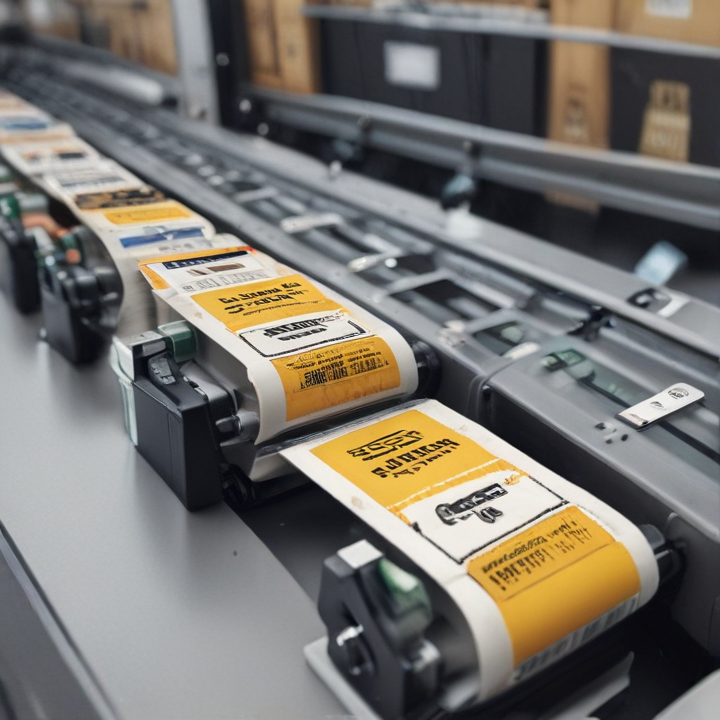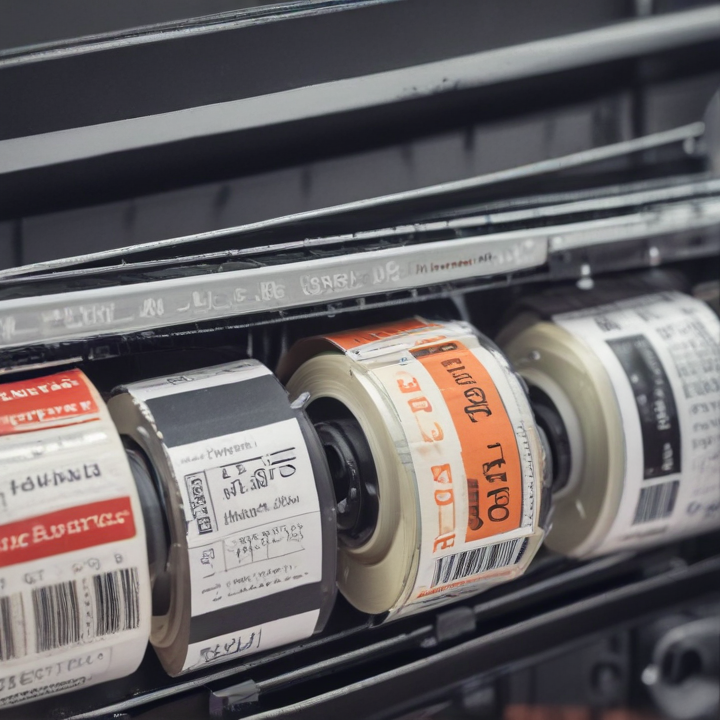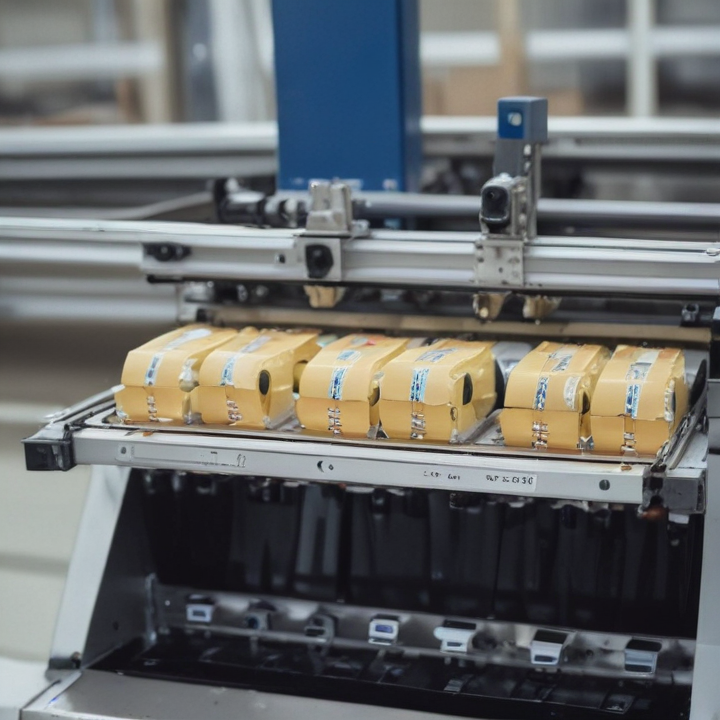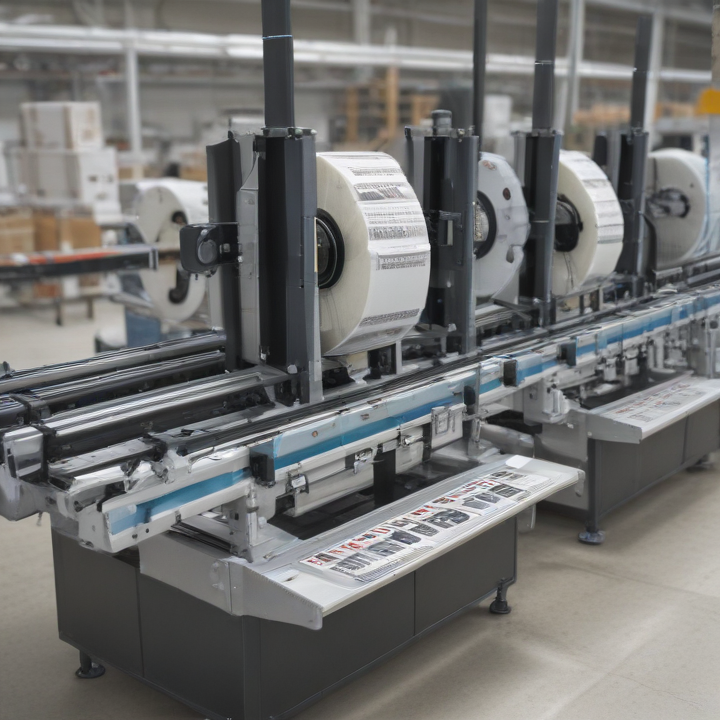List Technical Parameters of “automatic labeling systems”
Automatic labeling systems are highly specialized machines designed to apply labels to products, containers, or packages with precision and speed. Key technical parameters to consider include:
1. **Labeling Speed**: Measured in labels per minute (LPM), this parameter indicates the machine’s efficiency. High-speed systems can exceed 1,000 LPM.
2. **Label Placement Accuracy**: The precision with which labels are applied, typically within ±0.5 mm. Critical for products requiring exact positioning.
3. **Label Size Compatibility**: Ranges the machine can handle, detailing minimum and maximum label widths and lengths.
4. **Product Handling Range**: Indicates the sizes and shapes of products the system can accommodate, such as bottles, boxes, or various containers. Important dimensions include product width, height, and diameter.
5. **Type of Labels**: The system’s capability to handle different label types, such as pressure-sensitive, shrink sleeve, and glue-applied labels.
6. **Control System**: Usually includes a user interface or touchscreen for operation settings, adjustments, and monitoring. Often incorporates PLC (Programmable Logic Controller) for seamless integration and operation.
7. **Conveyor System**: Details the type of conveyor used, its speed, and adjustability for different product types and sizes.
8. **Material Compatibility**: Describes the materials of labels and products the system can process, such as paper, plastic, glass, or metal.
9. **Feeding Mechanism**: Information on whether the machine uses roll-to-roll, stack feeding, or other methods to supply labels.
10. **Sensor Technology**: Types of sensors used for detecting product position, label existence, or verifying barcode/RFID data.
11. **Power Requirements**: Electrical specifications, including voltage, frequency, and power consumption.
12. **Build Quality**: Construction materials (often stainless steel) and durability, which affect longevity and maintenance needs.
13. **Integration Capabilities**: Ability to connect with other systems, such as ERP, MES, or existing production lines.
14. **Regulatory Compliance**: Compliance with industry standards, including safety certifications (CE, UL, etc.).
15. **Changeover Time**: The duration required to switch between different products or label types, impacting downtime and flexibility.
These parameters are crucial when selecting an automatic labeling system to ensure it meets specific operational requirements.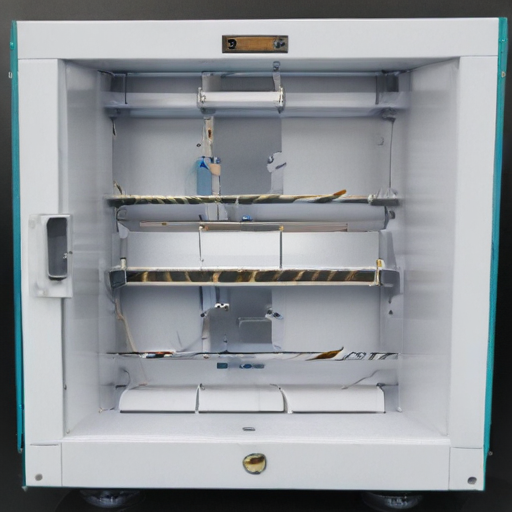
List Product features of “automatic labeling systems”
Automatic labeling systems offer a host of features designed to streamline the labeling process in various industries, enhancing efficiency, accuracy, and versatility. Here are some of the key features you can expect:
1. **High-Speed Operation**: These systems can handle a large volume of products quickly, improving throughput and productivity.
2. **Accuracy and Precision**: Advanced sensors and control mechanisms ensure labels are applied cleanly and accurately without wrinkles or misalignment.
3. **Versatility**: Suitable for a wide range of product shapes and sizes, from small bottles to large containers.
4. **Ease of Integration**: Can be easily integrated into existing production lines, often with customizable options to fit specific needs.
5. **User-Friendly Interface**: Touchscreen panels and intuitive software make it easy to set up and operate, reducing the need for extensive training.
6. **Automatic Feeder and Ejector**: These features ensure continuous operation without manual intervention, further saving time and labor costs.
7. **Adjustable Speed Control**: Allows operators to adjust the labeling speed based on the production needs and product requirements.
8. **Print and Apply Capabilities**: Some models come equipped with printers that can produce high-quality labels on-demand, allowing for real-time data printing (such as batch numbers and expiration dates).
9. **Durability and Reliability**: Built with robust materials designed for long-term use in industrial environments, ensuring minimal downtime and low maintenance costs.
10. **Advanced Label Detection**: Equipped with sophisticated sensors to detect label presence and quality, preventing mislabeling or application errors.
11. **Multiple Label Types**: Can handle various label formats including pressure-sensitive, shrink sleeves, roll-fed, and more.
12. **Adjustable Application Heads**: Offers flexibility in label application angles and positions, useful for complex products shapes.
13. **Safety Features**: Equipped with safety guards and emergency stop functions to protect operators during use.
14. **Data Integration**: Capable of integrating with ERP and other data management systems for real-time tracking and reporting.
15. **Modularity**: Modular components allow for easy upgrades and scalability as production needs grow.
These features make automatic labeling systems a valuable investment for companies looking to enhance their production efficiency and maintain high quality and consistency in labeling applications.
List Application of “automatic labeling systems”
Automatic labeling systems have revolutionized various industries by enhancing efficiency, accuracy, and consistency in labeling processes. Here are key applications:
1. **Manufacturing**:
– **Product Identification**: Helps in labeling products with essential information like batch numbers, serial numbers, and manufacturing date for traceability.
– **Compliance Labeling**: Ensures labels meet regulatory standards by automatically incorporating necessary compliance details such as safety warnings and barcodes.
2. **Food & Beverage**:
– **Nutritional Information**: Quickly and accurately applies labels with nutritional facts, ingredients, and expiration dates, ensuring compliance with health regulations.
– **Branding and Marketing**: Applies branded labels and promotional stickers efficiently, enhancing product appeal and marketability.
3. **Pharmaceutical**:
– **Medication Labels**: Attaches detailed labels with dosage information, usage instructions, and safety warnings, critical for patient safety and regulatory compliance.
– **Clinical Trials**: Helps in labeling clinical trial materials accurately to ensure reliable tracking and data integrity.
4. **Logistics & Warehousing**:
– **Inventory Management**: Assists in labeling packages and pallets for streamlined inventory tracking and warehouse management.
– **Shipping Labels**: Automatically generates and applies shipping labels, improving the speed and accuracy of dispatch operations.
5. **Retail**:
– **Price Tags**: Facilitates the automatic application of price tags on products, ensuring consistency across multiple items and locations.
– **Security Tags**: Labels products with security tags to prevent theft and ensure store security.
6. **Automotive**:
– **Parts Labeling**: Labels automotive parts with part numbers and barcodes to streamline assembly line operations and inventory tracking.
– **Safety Labels**: Ensures that safety warnings and instructions are appropriately labeled on automotive components.
7. **Textiles**:
– **Care Labels**: Applies care instruction labels to garments, helping consumers understand maintenance requirements.
– **Brand Labels**: Ensures brand labels are consistently attached, enhancing brand recognition and customer loyalty.
8. **Electronics**:
– **Component Labeling**: Labels electronic components with unique identifiers for easy tracking and quality control.
– **Warranty and Instruction Labels**: Attaches warranty information and user instructions, essential for consumer assurance and product usability.
Automatic labeling systems streamline operations, reduce errors, and ensure regulatory compliance across these diverse applications, ultimately contributing to enhanced operational efficiency and customer satisfaction.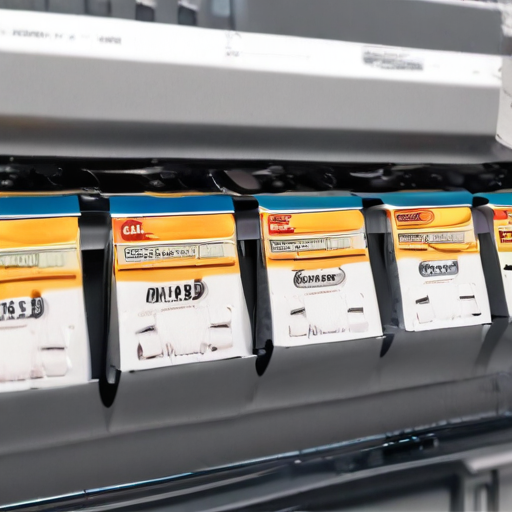
List Various Types of “automatic labeling systems”
Automatic labeling systems are employed across various industries to enhance the process of labeling products. Here are some common types:
1. **Print and Apply Labeling Systems**: These systems print labels in real-time and then apply them to products, ensuring up-to-date and accurate labeling.
2. **Pressure-Sensitive Labeling Systems**: Utilize adhesive-backed labels which are dispensed and pressed onto products. Widely used due to their versatility on different surfaces.
3. **Shrink Sleeve Labeling Systems**: Use heat to shrink a pre-printed plastic sleeve around the product, offering 360-degree coverage and tamper evidence.
4. **Hot Melt Glue Labeling Systems**: Employ hot glue to adhere labels onto products. These systems are often used for labeling glass bottles and jars.
5. **Wet Glue Labeling Systems**: Utilize water-based adhesives for labels, commonly used in the beverage industry for glass bottles.
6. **Roll-Fed Labeling Systems**: Labels are fed from a roll and either glued or wrapped around the product. These systems are efficient for high-speed production lines.
7. **RFID Labeling Systems**: Integrates RFID tags into labels for tracking and inventory management. RFID systems are beneficial for supply chain logistics.
8. **Laser Marking Systems**: Employ lasers to mark information directly onto products without the use of traditional labels. These are used for permanent labeling and anti-counterfeiting.
9. **Pallet Labeling Systems**: Designed specifically for labeling large pallets, these systems ensure labels are applied at appropriate locations even on large, bulky objects.
10. **Vision-guided Labeling Systems**: Utilize cameras and vision systems to precisely apply labels, beneficial where placement accuracy is critical.
These systems are chosen based on specific needs such as speed, label type, product shape, and industry regulations.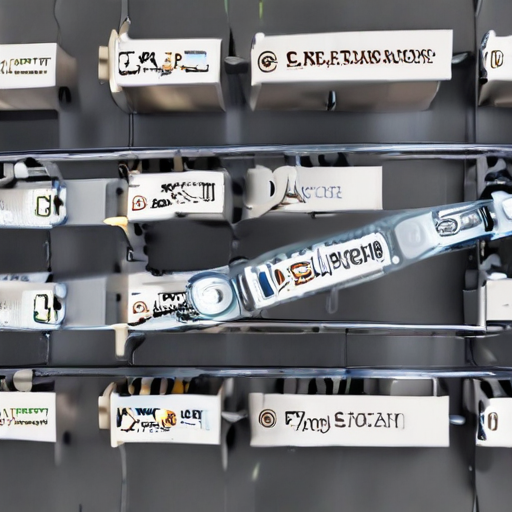
Custom Manufacturing Options for automatic labeling systems
Custom manufacturing of automatic labeling systems aims to meet the unique requirements of different industries. These custom solutions enhance operational efficiency, accuracy, and flexibility. Key custom manufacturing options include:
1. **Labeling Speed and Volume:**
– Systems can be configured for various speeds, from low-volume operations to high-speed, mass production lines, ensuring optimal throughput.
2. **Label Type and Size Compatibility:**
– Custom systems can accommodate various label types (pressure-sensitive, shrink sleeves, RFID tags) and sizes, catering to specific product requirements.
3. **Product Handling:**
– Machines can be tailored to handle different product shapes, sizes, and materials, ensuring precise label placement on bottles, boxes, cylindrical objects, and more.
4. **Integration with Existing Lines:**
– Customization allows seamless integration with existing production lines, including conveyors, fillers, and packaging machines, to improve overall efficiency.
5. **Print and Apply Capabilities:**
– Advanced systems can be equipped to print and apply labels in real-time, incorporating data such as barcodes, lot numbers, and expiration dates.
6. **Automation and Control Systems:**
– Custom control systems with user-friendly interfaces can be designed for easy operation, monitoring, and troubleshooting. Options may include PLC-based controls, touchscreens, and remote access.
7. **Environmental Adaptations:**
– Systems can be customized for specific operating environments, such as high-moisture areas, extreme temperatures, or cleanroom conditions, ensuring reliable performance.
8. **Regulatory Compliance:**
– Custom manufacturing ensures systems meet industry-specific regulations and standards, such as GMP, FDA, or CE requirements.
9. **Maintenance and Support:**
– Custom options may include features that facilitate easy maintenance, such as quick-change components or modular designs, and extended support services.
By incorporating these custom manufacturing options, automatic labeling systems can be tailored to meet the precise needs of diverse applications, enhancing productivity and ensuring high-quality labeling.
List Quality Control and The Manufacturing Process of “automatic labeling systems”
### Quality Control of Automatic Labeling Systems
#### 1. **Incoming Material Inspection:**
– **Raw materials** such as metals, plastics, and electronic components are inspected for compliance with specifications.
– **Sub-assemblies and outsourced parts** are checked for defects and accuracy.
#### 2. **In-Process Quality Control:**
– **Digital monitoring** through sensors and software tracks precision and functionality.
– **Routine inspections** including dimensional checks and alignment verifications during assembly.
#### 3. **Functional Testing:**
– **Operational tests** simulate real-world conditions to ensure labels are applied accurately.
– **Stress tests** assess durability under different conditions (e.g., varying speeds and environmental factors).
#### 4. **Final Quality Assurance:**
– **End-of-line testing** to validate the entire system’s performance.
– **Certification and compliance checks** with industry standards like ISO or CE.
#### 5. **Documentation and Traceability:**
– **Detailed records** of inspections, tests, and corrective actions.
– **Sequential tracking** of components and processes to enable traceability.
### Manufacturing Process of Automatic Labeling Systems
#### 1. **Design and Development:**
– **Conceptualization and Prototyping:** CAD software is used to design the system, and prototypes are built for initial testing.
– **Customization:** Systems are tailored to specific needs of clients.
#### 2. **Component Manufacturing:**
– **Machining and Fabricating:** Metal and plastic parts are machined, molded, or 3D printed.
– **Electronic Assembly:** PCBs and electronic modules are assembled and tested.
#### 3. **System Assembly:**
– **Mechanical Assembly:** Base frames, conveyor belts, and applicators are put together.
– **Electrical Integration:** Wiring, sensors, and control systems are installed and configured.
#### 4. **Software Development:**
– **Programming:** Customized software is developed to control labeling, sensor integration, and user interface.
– **Testing:** Software undergoes rigorous testing to ensure compatibility and functionality.
#### 5. **System Calibration:**
– **Fine-tuning:** Systems are calibrated to meet precision requirements for label placement.
– **Adjustment:** Settings are adjusted according to specific label sizes and materials.
#### 6. **Packaging and Shipping:**
– **Protective Packaging:** Systems are carefully packed to avoid damage during transit.
– **Logistics Coordination:** Managed to ensure timely delivery to clients.
This structured approach ensures quality, efficiency, and reliability of automatic labeling systems.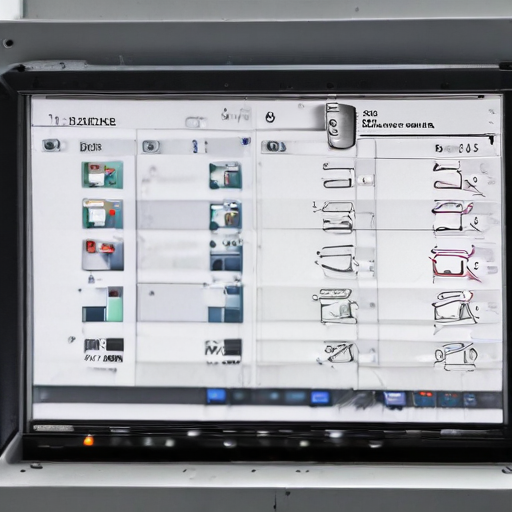
How to use “automatic labeling systems”
Automatic labeling systems streamline the process of applying labels to products, enhancing efficiency and accuracy in packaging operations. Here’s a brief guide on how to use such systems effectively:
1. **Select the Right System**: Choose a labeling system that suits your product type, production volume, and label specifications. Common types include wipe-on, blow-on, and tamp-blow applicators.
2. **Setup and Configuration**:
– **Positioning**: Place the system on the production line at a point where labels need to be applied.
– **Loading Labels**: Install label rolls properly, ensuring they are aligned and tensioned correctly to avoid misfeeds.
– **Calibration**: Set the system parameters like label size, spacing, and application speed. Use the control panel to adjust settings for precise placement.
3. **Integration**:
– **Software**: Integrate with existing software for synchronizing with the production line.
– **Sensors**: Utilize sensors for detecting product presence and ensuring accurate label placement.
4. **Operation**:
– **Start-Up**: Ensure all safety measures are in place before powering on the system.
– **Monitoring**: During operation, keep an eye on label roll status, and watch for any jams or misalignments.
– **Adjustment**: Make real-time adjustments through the control panel if discrepancies are noticed.
5. **Maintenance**:
– Regularly clean the system to prevent adhesive build-up on applicators.
– Schedule periodic maintenance to check for wear and tear on parts like rollers and belts.
– Calibrate sensors and check software updates to maintain optimal performance.
By following these steps, you can maximize the efficiency and reliability of automatic labeling systems, ensuring consistent and accurate labeling in your production process.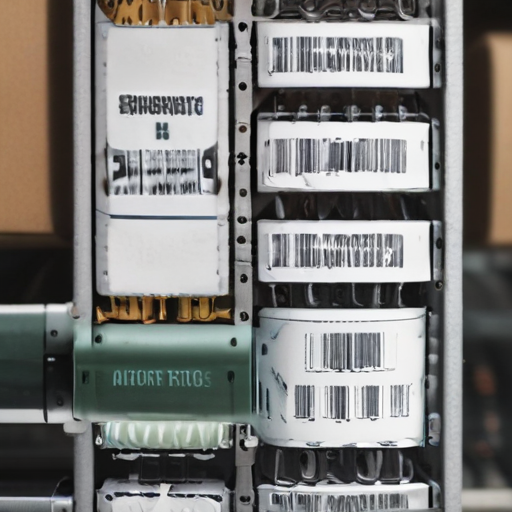
List Properties and Terms of “automatic labeling systems”
Automatic labeling systems are highly versatile and efficient solutions used primarily in manufacturing and packaging industries to affix labels to products, containers, and packages. Below are key properties and terms associated with these systems:
### Properties
1. **Automation**: Minimizes human intervention, increasing throughput and reducing labor costs.
2. **Speed**: Can label thousands of items per hour, enhancing productivity.
3. **Accuracy**: Ensures labels are applied consistently and precisely in the correct position.
4. **Flexibility**: Capable of handling various label types, sizes, and shapes.
5. **Durability**: Built to withstand rigorous industrial environments.
6. **Customization**: Allow for programmable settings to meet specific labeling requirements.
7. **Integration**: Can be integrated with existing production lines and systems (e.g., ERP, WMS).
8. **Ease of Use**: User-friendly interfaces with touchscreens and software for easy operation.
9. **Quality Control**: Incorporate inspection systems to verify label application and quality.
10. **Maintenance**: Often designed for easy maintenance with minimal downtime.
### Terms
– **Applicator**: The device or module that specifically applies the label to the product.
– **Conveyor System**: A mechanized track on which products are transported through the labeling station.
– **Print & Apply**: Systems that print the label and immediately apply it to the product, useful for dynamic data labeling.
– **Peel Edge**: The part of the machine where the label is separated from the backing paper before application.
– **Sensors**: Devices that detect the product or package to trigger the labeling process.
– **Bottle Wrap**: A common method where labels are wrapped around cylindrical items like bottles.
– **Tamp Module**: A part of the system used for pressing (or tamping) the label onto the product.
– **Label Rewind**: Collects the waste backing paper after label application.
– **HMI (Human-Machine Interface)**: Interface that allows operators to control and monitor the labeling system.
– **Roller**: Assists in the smooth application of the label to the product.
– **Feeder**: Mechanism that supplies products to the labeling system.
Automatic labeling systems enhance operational efficiency, accuracy, and production speed, making them invaluable in today’s fast-paced industrial environments.
List The Evolution history of “automatic labeling systems”
The evolution of automatic labeling systems reflects advancements in technology and industrial automation.
**Early 20th Century:**
– Manual labeling was prevalent, which was labor-intensive and slow.
**1940s-1950s:**
– Introduction of semi-automatic labeling machines. These early systems could assist in label application but required significant human intervention.
**1960s-1970s:**
– Development of automatic labeling systems began. These used simple mechanical arms and rollers.
– Introduction of pressure-sensitive labels that simplified the automatic application process.
**1980s:**
– Adoption of microprocessors and programmable logic controllers (PLCs) improved precision and flexibility.
– Emergence of barcodes increased the need for reliable and efficient labeling systems.
**1990s:**
– Enhanced software integration allowed for more complex label designs and data handling.
– Introduction of thermal-transfer and laser printers for on-demand and variable data printing.
**2000s:**
– Improved sensors and cameras enhanced quality control with real-time verification.
– Internet of Things (IoT) began to integrate with labeling systems, enabling remote monitoring and maintenance.
**2010s:**
– Growth in automation, robotics, and machine learning improved accuracy and reduced downtime.
– Development of RFID labeling for better tracking and inventory management.
**2020s:**
– Continued focus on Industry 4.0 integration, enabling smarter factories.
– Advanced AI and machine learning algorithms further optimize labeling processes.
– Focus on sustainability drives the development of eco-friendly labeling materials and systems.
This history illustrates a progression from manual processes toward highly automated, integrated systems that contribute to efficiency and accuracy in modern manufacturing and logistics.
How to Select a Reliable automatic labeling systems
Selecting a reliable automatic labeling system requires careful consideration of several key factors:
1. **Production Requirements:** Assess your production speed, volume, and efficiency needs. Ensure the labeling system can handle the required output rate without compromising accuracy.
2. **Labeling Accuracy:** Precision is critical. Choose a system known for consistent and accurate label placement to avoid wasting materials and ensuring compliance with labeling standards.
3. **Versatility:** A good system should handle a variety of product shapes and sizes. Look for adjustable or customizable options to cater to diverse packaging needs.
4. **Ease of Integration:** Ensure the system can be seamlessly integrated into your existing production line with minimal disruption. Compatibility with your current machinery and software is essential.
5. **User-Friendly Interface:** Select a system with intuitive controls and easy-to-navigate interfaces to minimize training time and operational errors.
6. **Material and Adhesive Compatibility:** Verify that the system can work with different types of labeling materials and adhesives to suit your specific product requirements.
7. **Maintenance and Support:** Opt for a system from a reputable manufacturer that offers robust after-sales support, including maintenance services and readily available spare parts.
8. **Cost and ROI:** Consider the total cost of ownership, including initial investment, operating costs, and expected ROI. A more expensive system may offer better durability and lower long-term costs.
9. **Customer Reviews and References:** Research customer testimonials and seek references to gauge the real-world performance and reliability of the system.
10. **Compliance and Safety:** Ensure the system meets industry regulations and safety standards to avoid legal issues and ensure operator safety.
By thoroughly evaluating these criteria, you can select a reliable automatic labeling system that enhances your production efficiency and maintains high standards of quality.
List “automatic labeling systems” FAQ
**Automatic Labeling Systems FAQ**
**1. What is an automatic labeling system?**
An automatic labeling system is a machine that applies labels to products, packages, or containers without requiring manual intervention. These systems improve efficiency by automating the labeling process.
**2. How do automatic labeling systems work?**
These systems use sensors and programmable controls to apply labels precisely and consistently. Products move along a conveyor belt, and the system applies labels at designated spots.
**3. What types of products can be labeled?**
Automatic labeling systems can label a wide variety of products including bottles, boxes, cans, and more. They are adaptable to different shapes and sizes.
**4. What are the benefits of using automatic labeling systems?**
Benefits include increased efficiency, consistency in labeling, reduced labor costs, and the ability to handle large volumes with minimal errors.
**5. Can these systems handle different label sizes and shapes?**
Yes, many automatic labeling systems are designed to handle various sizes, shapes, and materials of labels, offering flexibility in operations.
**6. How do you set up an automatic labeling system?**
Setting up involves configuring the machine with the correct settings for the label size, shape, and product type. It requires initial calibration, which can be adjusted via a user interface or control panel.
**7. Are these systems compatible with existing production lines?**
Most automatic labeling systems are designed to integrate seamlessly with existing production lines, enhancing overall productivity.
**8. What maintenance do these systems require?**
Regular maintenance includes cleaning, checking for wear and tear, software updates, and recalibration to ensure optimal performance.
**9. Are there any safety concerns?**
Automatic labeling systems are generally safe when used correctly. They come equipped with safety features like emergency stop buttons and safety guards to protect operators.
**10. How do I choose the right system for my needs?**
Consider factors such as the type of products you need to label, the volume of production, label size and shape, and your budget. Consulting with manufacturers can also help you find a system that fits your specific needs.
These FAQs provide a snapshot of what automatic labeling systems are and their advantages, helping users make informed decisions.
Top 10 FAQ with answer about automatic labeling systems for Buyer Sourcing from China
Certainly! Here are the top 10 frequently asked questions (FAQ) about automatic labeling systems for buyers sourcing from China, along with their concise answers:
1. **What are automatic labeling systems?**
Automatic labeling systems are machines designed to apply labels onto products, containers, or packaging efficiently and accurately without manual intervention.
2. **What types of products can they label?**
These systems can label a wide range of products, including bottles, boxes, cans, and other containers, across various industries such as food and beverage, pharmaceuticals, cosmetics, and logistics.
3. **How do I choose the right labeling system?**
Consider factors such as the type of products, production speed, label types (pressure-sensitive, hot glue, etc.), and specific industry requirements. Consulting with suppliers and evaluating machine specifications can help in making the right decision.
4. **Are Chinese manufacturers reliable?**
Many Chinese manufacturers are highly reliable, offering high-quality labeling systems at competitive prices. Verify their credentials, check reviews, request product demonstrations, and look for certifications like ISO to ensure reliability.
5. **What is the typical lead time for delivery?**
Lead times vary by manufacturer and complexity of the system but generally range from 2 to 8 weeks. It’s essential to confirm this with the supplier beforehand.
6. **What kind of after-sales support is available?**
Reputable manufacturers offer comprehensive after-sales support, including installation, training, maintenance, and technical assistance. Ensure this is clearly defined in the purchase agreement.
7. **How do I handle customs and import duties?**
When importing from China, be aware of customs regulations, import duties, and necessary documentation in your country. Many suppliers can assist with logistics and customs clearance.
8. **What are the payment terms for these systems?**
Payment terms vary but often include options like T/T (Telegraphic Transfer), L/C (Letter of Credit), or upfront deposits. It’s crucial to agree on terms that protect both buyer and seller.
9. **Can the systems be customized?**
Yes, many manufacturers offer customization to meet specific needs such as different labeling speeds, sizes, and application methods. Discuss your requirements in detail with the supplier.
10. **What should be included in the warranty?**
A standard warranty should cover parts and labor for a specific period, usually 1-2 years. Ensure it includes support for troubleshooting and availability of replacement parts.
By addressing these common questions, buyers can make informed decisions when sourcing automatic labeling systems from China.

